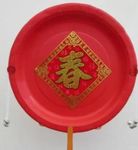Paulton Junior School - Year 4 Home Learning - Date : Friday 12th February - Paulton ...
←
→
Page content transcription
If your browser does not render page correctly, please read the page content below
Paulton Junior School – Year 4 Home Learning – Date : Friday 12th February
Daily tasks
30 minutes reading/ 20 mins on 20 mins on Get active
reading comprehension www.ttrockstars.com www.Nessy.com https://www.youtube.com/watch?v=EDC-
plCTBbc
www.myon.co.uk
https://ukhosted38.renlearn.co.uk/6699465/
English
China Fact File
Today in Paulton Junior School we are celebrating Chinese New Year. So for our English lesson, we would like you to complete a fact
file about the country China. Remember the difference between facts and opinions, a fact can be proven true. Research your facts
using the internet, an atlas, encyclopaedias, magazines, leaflets. You can present your information however you like: creatively in
your home learning book or on paper with your pencils, collage and felt-tips, OR, by using computer skills to produce a PowerPoint
presentation, a poster or a written paragraph about the country of China.
Focus on the facts of the country
China is a fascinating country and as part of your research we would like you to answer the following ten questions:
• Where is China in the world?
• How many people live in China?
• Do you know any famous people from China?
• How many different language are spoken in China?
• What is the name of the tallest mountain in China and how tall is it?
• What is the name of the longest river in China and how long is it?• What does the national flag for China look like?
• What would you recommend people do if they visited China?
• What is the national animal of China?
• Which twelve animals are included in the Chinese New Year?
Make your fact file as colourful and eye catching as you can. As a school we are going to create virtual display of your amazing work
and we would love it to be full of Year 4 work. Please share your efforts with us on the year 4 email address.
Maths
Tangrams
But what is a tangram?
Invented in China approximately 200 years ago, a tangram is a two-dimensional re-arrangement puzzle
created by cutting a square into seven pieces -- seven geometric shapes called "tans"What are the seven shapes in a tangram? Each tangram puzzle contains the following: • 2 large right triangles • 1 medium-sized right triangle • 2 small right triangles • 1 small square • 1 parallelogram Arranged correctly, these tangram shapes can be fitted together as a large square, rectangle, or triangle. They can also be arranged in a variety of complex shapes, including fanciful ones (like the rabbit illustrated here). There are many ways to play with tangrams. The simplest way is to let you create your own complex shapes. But traditionally, tangrams are treated as puzzles. The player is shown a target shape in outline, so that the "seams" between the composite tans are concealed. Then the player attempts to recreate the shape using the seven pieces. Use the template of the 7 shapes on the website page to get a tangram. Print it off and make your own objects, animals and items. Use the weblink here to investigate Tangrams on the computer game. https://mathigon.org/tangram Send in photos of your work to the year4@paultonjuniorschool.co.uk
Here are the numbers 0-10 have a go at writing them. Make some number cards or bunting with the symbols on.
Foundation
Foundation- Art Following the theme of Chinese New Year, we are going to create some
Chinese art. It is up to you what you create, see the ideas below for some
inspiration:
• Origami
• Chinese dragon
• Ox (2021 is the year of the ox)
• Chinese lantern
• Chinese blossom
• Chinese drum craft
• Willow Pattern plate
• Or anything else you can think of that relates to Chinese New Year.You can also read



























































